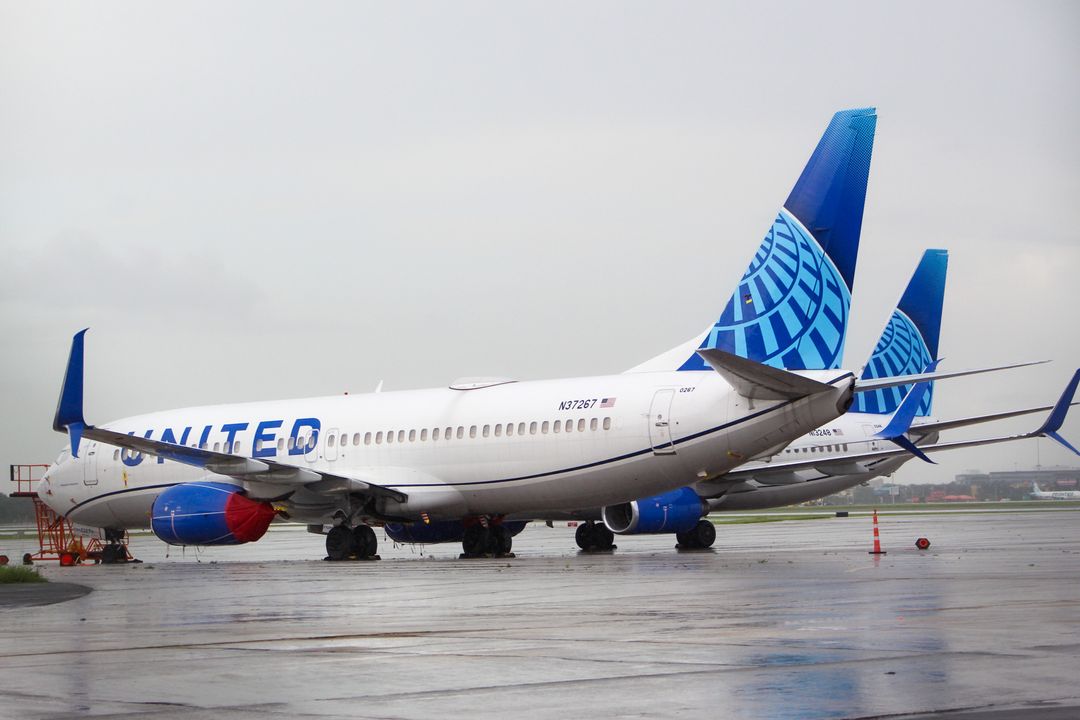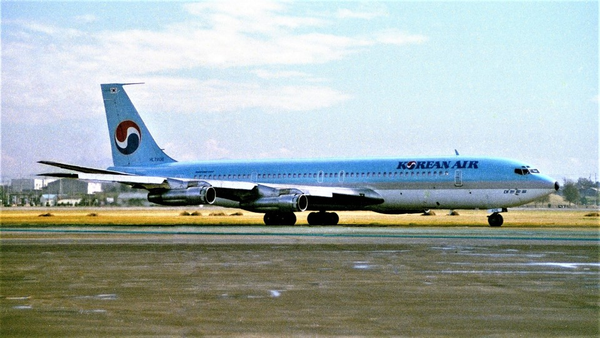A routine flight from Harry Reid International Airport (LAS) in Las Vegas to Washington Dulles International Airport (IAD) took an unexpected turn on January 28. A United Airlines Boeing 737-800 carrying 166 passengers and seven crew members was forced to divert to Denver International Airport (DEN) due to a crack in the windshield that was discovered.

The Incident
The Federal Aviation Administration (FAA) confirmed the incident, stating that "cracks happen across all airplane models" and generally, when they occur, it's in the "glass pane on the outside, which serves as a protective covering for the inner structural portion." The FAA also added that the pilots decided to land in Denver as a precaution after noticing the crack mid-flight.
The FAA added that the plane landed safely at around 1:10 p.m. MST at Denver International Airport (DEN), and passengers could deplane normally. United Airlines quickly arranged for a Boeing 737-900 replacement aircraft, which departed Denver for Washington-Dulles at approximately 3:00 p.m. MST, minimizing additional passenger delays.
United Airlines said in a statement:
"After safely landing, customers deplaned normally and a plane change occurred. The flight departed Denver around 3 p.m. MT to Dulles."

The airline acknowledged the incident in a statement, praising the crew's swift action and prioritizing the safety of everyone on board. While the cause of the cracked windshield is still under investigation, it's important to note that aircraft windshields are designed with multiple layers of reinforced glass, making them highly resistant to damage.
Cracks can occur due to various factors, including bird strikes, hail, or even temperature fluctuations. However, strict aviation regulations and thorough pre-flight inspections are in place to minimize the risk of such incidents.

Impact on Aviation Safety
The diversion to Denver highlights the importance of pilots' quick decision-making and situational awareness. Trained to prioritize safety above all else, pilots have the authority to divert a flight to the nearest suitable airport if they suspect any potential threat to the safety of the aircraft or passengers.
This incident also underscores the value of having strong contingency plans in place. Airlines like United regularly run simulations and practice procedures to respond to various in-flight scenarios, ensuring a smooth and efficient response in emergencies or unexpected occurrences.
The cracked windshield incident, while unsettling for passengers, ultimately served as a testament to the robustness of aviation safety protocols. The pilots' decisive action, the airline's quick response, and the multi-layered windshield design all contributed to a safe and successful outcome.

Related Incidents
This is not the first such incident over the past month. On January 16, an All Nippon Airways (ANA) Boeing 737-800 flight experienced a cracked cockpit window mid-air, forcing a return to New Chitose Airport. Though the incident caused concern, no injuries occurred thanks to the plane's multi-layered window design and the pilots' quick response.
While the cause remains under investigation, this event raises questions about potential future occurrences, especially considering Boeing's recent safety concerns with the 737 MAX model. The aviation industry will analyze this incident to improve safety protocols and ensure safe air travel.
Qanot Sharq Takes Delivery of First Airbus A321XLR to Transform Central Asian Long Haul Travel » Pentagon Alarm: China’s ‘Tailless’ 6th-Gen Fighter Prototypes Are Already Airborne » Ryanair to Appeal $302 Million Italian Fine Over Alleged Travel Agency Restrictions »
Comments (0)
Add Your Comment
SHARE
TAGS
NEWS United Airlines Boeing Boeing 737-800 Las Vegas LAS IAD Washington Windshield Technical Emergency Landing Diversion SafetyRECENTLY PUBLISHED
 KAL858: The North Korean Bombing that Shocked the World
Among the 99 passengers boarding Korean Air Flight 858 on November 29, 1987, few could imagine their journey would end as one of aviation's darkest mysteries.
STORIES
READ MORE »
KAL858: The North Korean Bombing that Shocked the World
Among the 99 passengers boarding Korean Air Flight 858 on November 29, 1987, few could imagine their journey would end as one of aviation's darkest mysteries.
STORIES
READ MORE »
 Ghost Networks: The Rise, Fall, and Revival of Fifth-Freedom Flights
Fifth-freedom flights — routes where an airline flies between two countries outside its home base — have always lived in aviation's twilight zone. We chart their rise, their near-disappearance, and the surprising markets where they still thrive today. Then we take you on board a special Seoul-Tokyo fifth-freedom flight to show how the experience stacks up against a typical regional carrier.
TRIP REPORTS
READ MORE »
Ghost Networks: The Rise, Fall, and Revival of Fifth-Freedom Flights
Fifth-freedom flights — routes where an airline flies between two countries outside its home base — have always lived in aviation's twilight zone. We chart their rise, their near-disappearance, and the surprising markets where they still thrive today. Then we take you on board a special Seoul-Tokyo fifth-freedom flight to show how the experience stacks up against a typical regional carrier.
TRIP REPORTS
READ MORE »
 US Air Force to Launch New Experimental One-Way Attack Drone Unit
In a move that signals a tectonic shift in American airpower, the U.S. Air Force is preparing to stand up its first-ever experimental unit dedicated solely to "One-Way Attack" (OWA) drones.
NEWS
READ MORE »
US Air Force to Launch New Experimental One-Way Attack Drone Unit
In a move that signals a tectonic shift in American airpower, the U.S. Air Force is preparing to stand up its first-ever experimental unit dedicated solely to "One-Way Attack" (OWA) drones.
NEWS
READ MORE »



